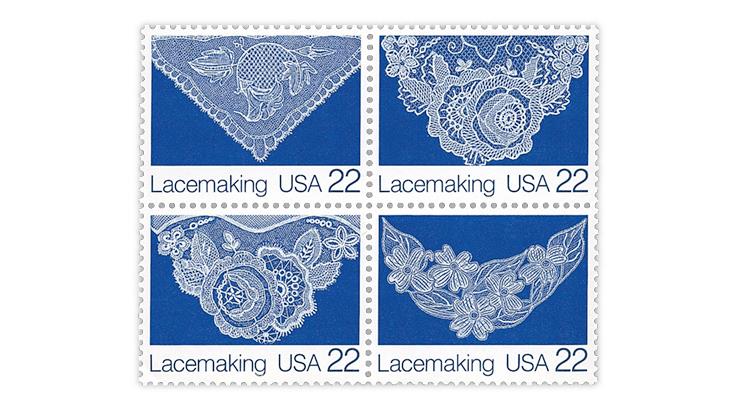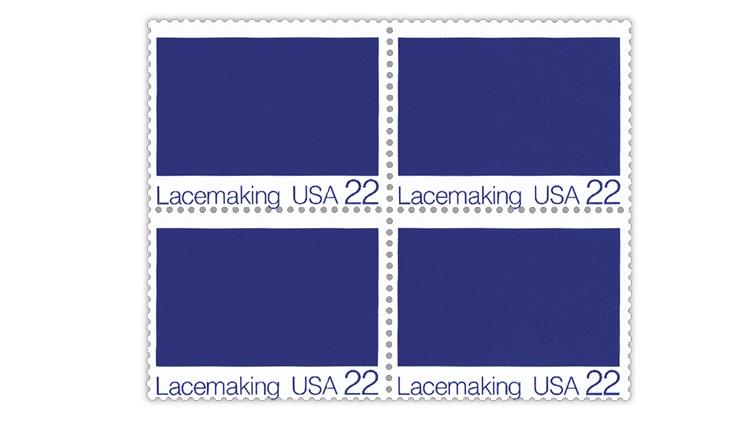US Stamps
Printing experimentation caused varieties of Lacemaking stamps
U.S. Stamp Notes by John M. Hotchner
An April 1, 1986, press release from the United States Postal Service announced that “the 22-cent Lacemaking stamps which were to have been issued May 2, will be deferred until a high quality product can be assured.”
That press release explained that capturing the lace effect was proving to be difficult and that more time would be needed to perfect the technique.
This se-tenant (side-by-side) block of four in the American Folk Art series (Scott 2351-2354a) ultimately had its first day on Aug. 14, 1987. As can be seen in Figure 1, the Lacemaking stamps were worth waiting for.
What delayed the stamps was experimentation using both embossing and gravure printing.
The Bureau of Engraving and Printing and the Postal Service finally settled on printing the blue background by offset and the white lace by intaglio. The latter resulted in the lace standing up off the paper, enhancing the effect significantly.
Until the installation of the Bureau’s D press, constructed to print offset and intaglio in a single run, such stamps were not possible. However when the capabilities of a new press are probed in a learn-by-doing environment as with the Lacemaking stamps, a high percentage of waste can be expected. And the more waste there is, the more likely some will escape.
For the Lacemaking block of four, there is a listed error: missing lace. The Scott Catalogue of Errors on U.S. Postage Stamps describes this as “white omitted.” Figure 2 shows this error block.
To read the rest of the column, subscribe to Linn’s Stamp News.
Connect with Linn’s Stamp News:
Sign up for our newsletter
Like us on Facebook
Follow us on Twitter
MORE RELATED ARTICLES
Headlines
-
World Stamps
Oct 8, 2024, 3 PMRoyal Mail’s Oct. 1 definitive meets new international standard rate
-
World Stamps
Oct 8, 2024, 12 PMPostcrossing meetup Oct. 9 at U.N. headquarters
-
Postal Updates
Oct 7, 2024, 5 PMUSPS plans to raise postal rates five times in next three years
-
US Stamps
Oct 7, 2024, 3 PMMcMurtrie dismissed as APS education director following Sept. 21 arrest










